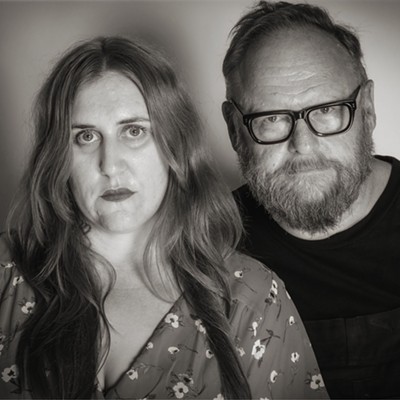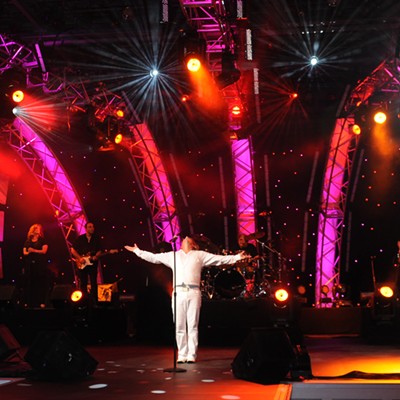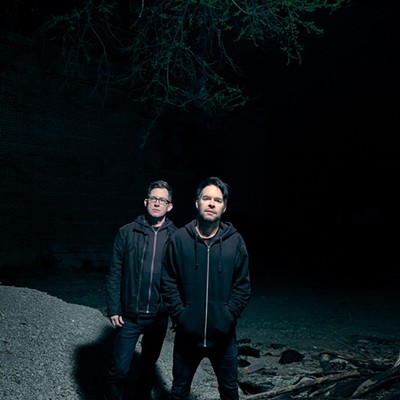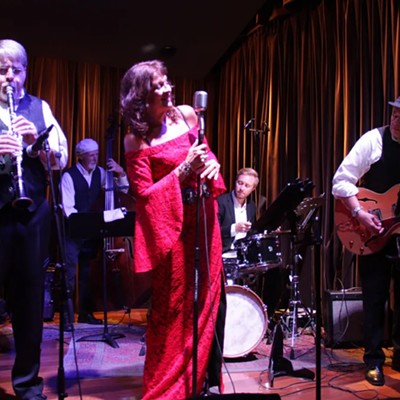"We were roommates, and instead of watching television, we would just sit around our 8-track and record song after song. Not even songs--just sort of experiments with different sounds," said Spearin.
Eventually, Do Make Say Think found themselves among the leading bands in the instrumental-rock world; they're labelmates on Constellation with Godspeed You! Black Emperor, and Spearin also plays with Broken Social Scene. But for their newest album, You, You're a History in Rust, they decided to do something even more experimental: use vocals.
"I think when we started making this record, we had the idea of sort of opening doors a little bit, trying different things," said Spearin. "It was an experiment. I don't think it's a new direction for the band, (but) I think it actually worked out really, really well."
Do Make Say Think brought in friends Tony Dekker (also of Great Lake Swimmers) and Alex Lukashevsky to sing on "A With Living."
"The idea was to not find a single voice to represent the band after all these years, but to have more of a choral thing to keep it more about the music than about the character of a single voice," explained Spearin. "So we did lots of overdubs of Alex and lots of overdubs of Tony, and then when Akron/Family were in town, we got them to sing. ... And then we ourselves sang as well--we sang the lyrics on the last song, so there are two songs with words and three songs with oohing and ahing. It was kind of trying to use the voice as an instrument."
A muted, tribal drum beat begins "A With Living," and single guitar notes rise in volume. Lukashevsky and Dekker's voices come in and follow the rhythm of the snare drum. Numerous voices blend together as the song swells, and then the voices drop out as the instruments recede. It's reminiscent of Crosby, Stills, Nash and Young in the vocal blending.
But then halfway through, the song goes from spiritual circle to contemplative lone wandering; a pedal steel gives off small cries; some feedback slips in; an acoustic guitar strums; you hear some tapping; the voices come forward and then fall away. It's neither sad nor happy; it just is. Horns begin to join in with the voices, and the song ends on a satisfied sustained note. The voices become another sound in the song, another aural texture that helps to progress the energy and ambience of the overall composition; what they are actually singing is not important.
You, You're a History in Rust rejoices in the relationship between instruments and voice: Voice becomes instrument, and instrument becomes voice. Do Make Say Think let the music talk to them before they turn around and begin to talk to it.
"Basically, you just play, and you don't think about why you're playing ,and then you listen back and you think, oh, that's where we were going there; OK, let's explore that a little bit further," said Spearin of the band's writing process. "You're not trying to support some lyrical idea or something like that. Even when we recorded these songs with lyrics, we actually recorded the music first and made sure they could stand on their own instrumentally, and then we added the vocals, so we didn't compose the song around the lyrics in any way at all."
Although the name came from words painted on a wall in an elementary school, Do Make Say Think describes the band's composing process: First they do and make, then they say and think about it, and then they go back and do and make again more consciously.
The title, You, You're a History in Rust, came about through "listening back to the record and trying to find out what it was talking about," said Spearin.
"We found that we were going toward a sense of decay and dirt and earthiness, and You, Your History in Rust sort of refers to that sense of finding beauty in things that have fallen apart or decayed. Everybody's past is mostly forgotten, and the forgetfulness is sort of an important point of the record. In this sense, You, Your History in Rust is talking about all the things that you don't remember about your life. There are beautiful things that have happened in your life, beautiful things that you've seen that you don't remember; maybe it's as simple as some rain on the windowsill that you saw when you were looking at the window seven months ago, but there are all these little moments in life that just go, and they're gone, one after the other. ... Painful moments disappear, and you forget about painful moments as well. I think that's unfortunate, because if you remember some of the pains you've had in your life, you're more likely to be compassionate toward other people's pain; so the idea is about finding a kind of sadness and a kind of respect for parts of your life that are lost, forever."
You, You're a History in Rust also sounds very earthy, which Spearin said was intentional.
"There was an attempt on this record to try and be a little bit less spacey: less analog synthesizers, less guitar effects like we'd done in the past. This one, we wanted to be a bit more raw and organic-sounding, so we used more acoustic instruments, like acoustic guitars and dirty electric guitar sounds, kind of Neil Young-style--a real brown kind of sound. We would take the drum tracks and run them through old amplifiers from the 1940s to give them a dirty, raw character, rather than psychedelic. I've never really thought of our music as being psychedelic, but it kind of had that spacey quality, and we wanted to try getting a little more raw and natural but still keep to the character of the band."
Adding voices, then, becomes just another way to create a certain instrumental sound: In You, You're a History in Rust's case, the voices are the rawest, most natural instrument present.











